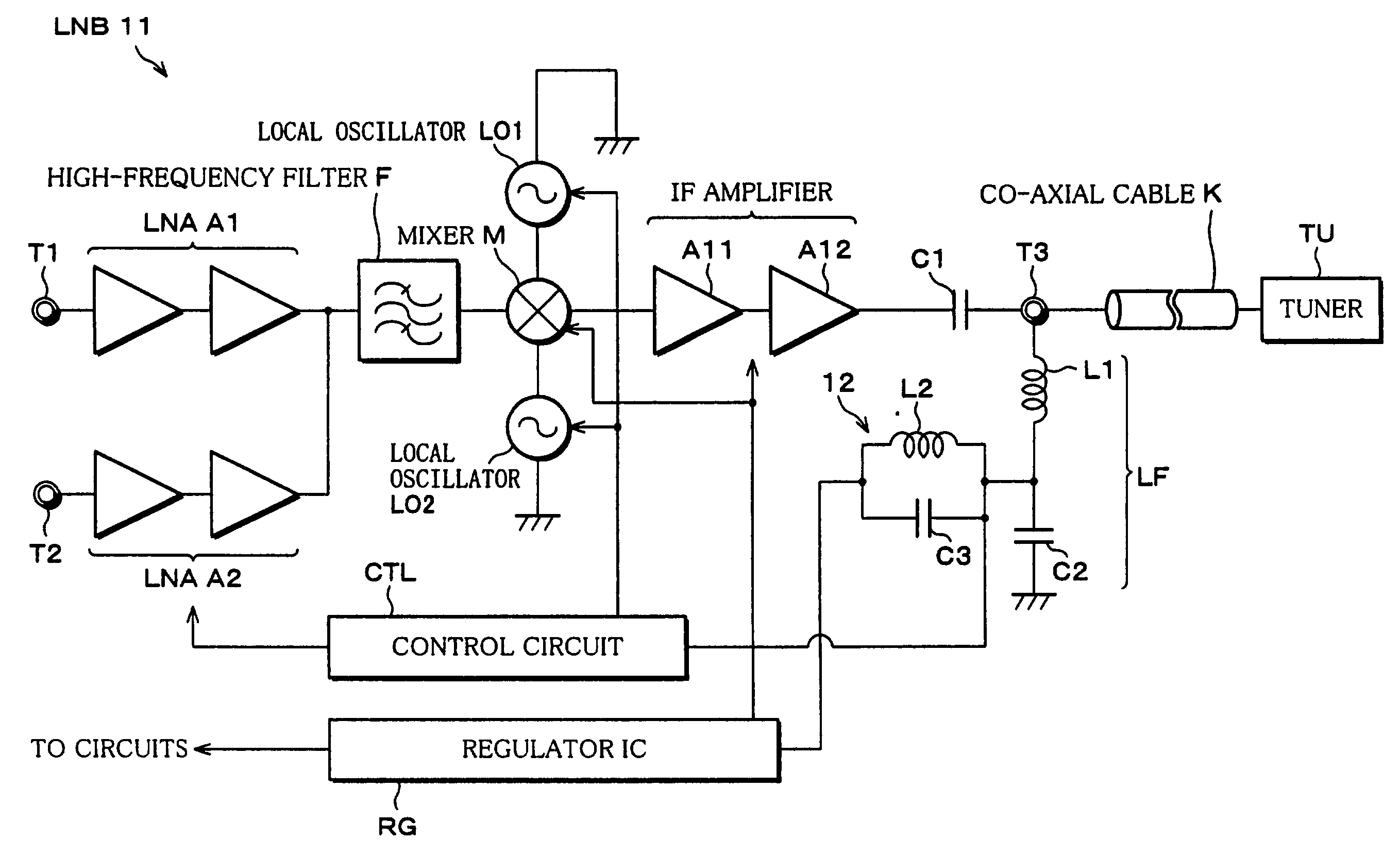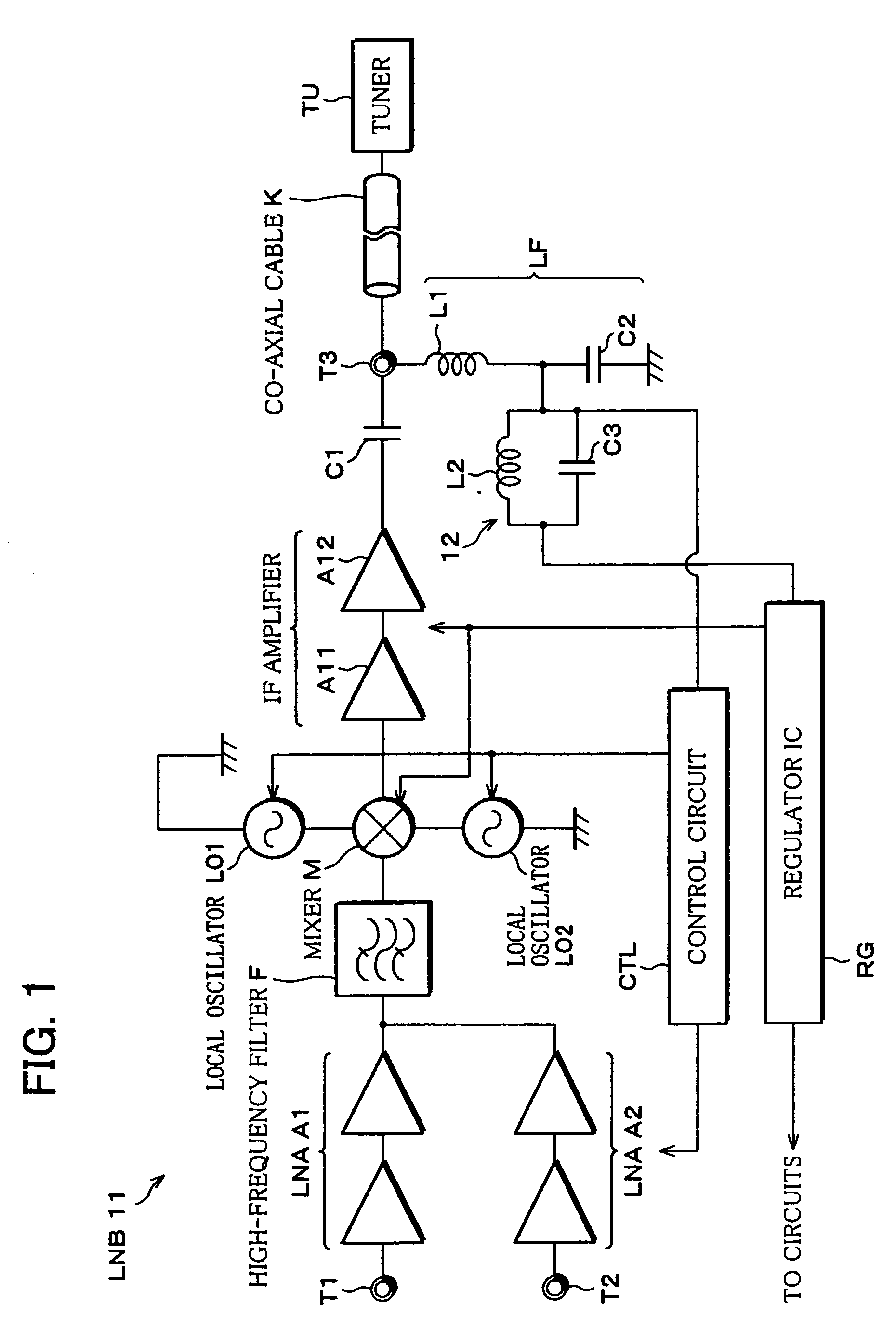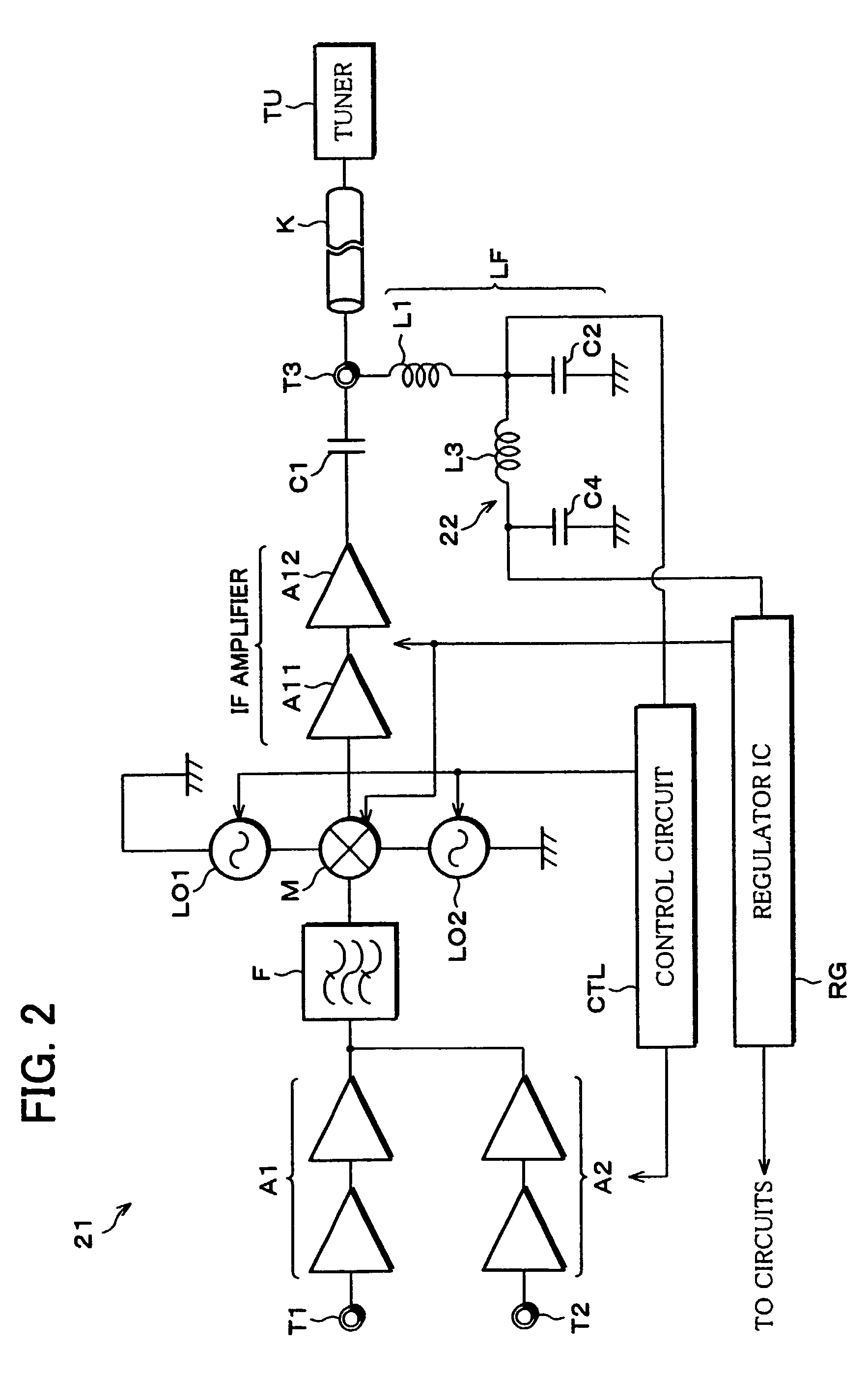Satellite receiving converter and satellite receiving system
a satellite receiving and converter technology, applied in the field of satellite receiving converter and satellite receiving system, can solve the problems of increasing customer complaints, affecting the service quality of the customer, and the inability to select the image signal, so as to prevent the amplitude of the control signal from being largely reduced
- Summary
- Abstract
- Description
- Claims
- Application Information
AI Technical Summary
Benefits of technology
Problems solved by technology
Method used
Image
Examples
embodiment 1
[Embodiment 1]
[0040]The following will explain a first embodiment of the present invention with reference to FIG. 1.
[0041]FIG. 1 is a block diagram showing an electrical arrangement of a LNB11 according to the first embodiment of the present invention. In the LNB11, a signal of horizontally-polarized wave is inputted to a terminal T1 and a signal of vertically-polarized wave is inputted to a terminal T2, from a receiving horn (not shown).
[0042]As it will be described later, the inputted signals are respectively amplified by LNAs A1 and A2 which are selectively activated by a control circuit CTL, then are inputted to a mixer M via a common high frequency filter F. Further, a local oscillation signal is inputted to the mixer M from local oscillators LO1 and LO2 which are selectively activated by the control circuit CTL.
[0043]The mixer M downconverts a low-band signal inputted from the terminal T1 or the terminal T2 to an intermediate frequency signal of 950 MHz to 1950 MHz, by mixing ...
embodiment 2
[Embodiment 2]
[0051]The following will explain another embodiment of the present invention with reference to FIG. 2. For ease of explanation, materials having the equivalent functions as those shown in the drawings pertaining to Embodiment 1 above will be given the same reference symbols, and explanation thereof will be omitted here.
[0052]FIG. 2 is a block diagram showing an electrical arrangement of a LNB21 according to the second embodiment of the present invention. The LNB21 is similar to the described LNB11. The difference between the LNB11 and the LNB21 is an inductor L3 and a capacitor C4 provided instead of the trap circuit 12 of the LNB11. The inductor L3 and the capacitor C4 are respectively provided in series and in parallel between the low-pass filter LF and the input capacitor of the regulator ICRG. The inductor L3 and the capacitor C4 make up a low-pass filter 22.
[0053]With this arrangement, it is possible to increase the impedance XL at the signal input-output terminal...
embodiment 3
[Embodiment 3]
[0055]The following will explain another embodiment of the present invention with reference to FIG. 3. For ease of explanation, materials having the equivalent functions as those shown in the drawings pertaining to Embodiments 1 and 2 above will be given the same reference symbols, and explanation thereof will be omitted here.
[0056]FIG. 3 is a block diagram showing an electrical arrangement of a LNB31 according to the third embodiment of the present invention. The LNB31 is similar to the described LNB21.
[0057]The LNB21 had a single stage low-pass filter 22 made up of the inductor L3 and the capacitor C4; however, the LNB31 has another low-pass filter 22 made up of an inductor L4 and a capacitor C5 in addition to the low-pass filter 22 of LNB21.
[0058]With this arrangement, it is possible to increase the impedance XL at the signal input-output terminal T3 to about 1.4 k Ω. Note that, a larger number of the low-pass filters 22 may suitably be provided.
[0059]Further, also ...
PUM
 Login to View More
Login to View More Abstract
Description
Claims
Application Information
 Login to View More
Login to View More - R&D
- Intellectual Property
- Life Sciences
- Materials
- Tech Scout
- Unparalleled Data Quality
- Higher Quality Content
- 60% Fewer Hallucinations
Browse by: Latest US Patents, China's latest patents, Technical Efficacy Thesaurus, Application Domain, Technology Topic, Popular Technical Reports.
© 2025 PatSnap. All rights reserved.Legal|Privacy policy|Modern Slavery Act Transparency Statement|Sitemap|About US| Contact US: help@patsnap.com



